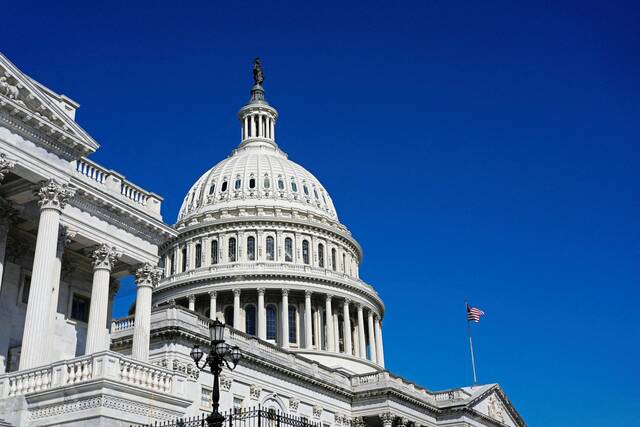Many of Pittsburgh’s biggest developments are taking far too long to move from vision to reality.
The Lower Hill redevelopment, the Bakery Square expansion and the Esplanade riverfront development project are all examples of projects that could be transforming neighborhoods right now but are instead bogged down in prolonged review processes and community disputes.
These drawn-out processes frustrate developers, strain community trust and delay critical neighborhood improvements. Municipalities big and small all across the country are grappling with this issue.
One way to address this is by adopting a voluntary — but guided — community benefits agreement (CBA) framework as part of any municipality’s development review process. In this model, any variances, zoning incentives or accelerated review timeline would be contingent on the developer’s willingness to negotiate and sign a CBA with the community as part of municipality’s development review process. This approach could streamline negotiations, avoid duplication of municipality required mitigation efforts, secure meaningful community benefits, and speed projects toward approval without sacrificing community’s voice.
What CBAs are and how they work
A community benefits agreement is a legally binding contract between a developer and a coalition of community groups — and sometimes the municipality — detailing specific benefits the developer will deliver in exchange for community support or non-opposition. These benefits can include affordable housing, local hiring and job training, small business support, roadway infrastructure, parks and green space, community facilities maintenances or environmental improvements.
The process typically starts with coalition-building among residents, community and business organizations and other stakeholders, followed by identifying community priorities, negotiating with the developer, drafting and signing the agreement, and establishing mechanisms for oversight.
The key benefits of CBAs are that they can defuse opposition early, create enforceable and transparent commitments, and foster creative solutions tailored to local needs. However, they can also face challenges — such as questions about who legitimately represents the community, developer resistance, enforcement gaps if not tied to municipality approvals, or vague promises that fail to deliver.
The first major CBA in the U.S. negotiated for Los Angeles’ Staples Center project in 2001 delivered millions of dollars in housing and job programs. In the Midwest, projects like the Milwaukee Bucks arena redevelopment have shown that CBAs can produce tangible results when properly structured, including commitments to local hiring, minority-owned business participation, and housing funds. Cleveland, Ohio, has a citywide community benefit framework that yielded over $92 million in contracts benefiting small and diverse businesses from 2023-24 projects alone.
CBAs as an effective tool for affordable housing
CBAs can also be a powerful tool for advancing affordable housing goals, particularly when they include flexible options that appeal to both developers and communities. Municipalities should strategically deploy targeted incentives, including tax exemptions, density bonuses, infrastructure assistance, grants and direct funding, to address the funding gaps inherent in affordable housing development.
But instead of simply mandating a set percentage of new units to be designated as affordable, a municipality’s CBA framework could offer a flexible alternative. Developers could choose to opt out of building those required units by contributing a reasonable proportion of each affordable unit’s market value to a dedicated affordable housing trust fund. This proportion must be carefully determined based on the specific market conditions of the municipality, overall real estate trends, the financial feasibility for developers and the local affordable housing goals.
The municipality could then use this fund to incentivize or subsidize affordable housing elsewhere — especially in neighborhoods with little ongoing development, where land and construction costs are lower and the same investment could yield more units.
With the same monetary value, developers could also choose alternative benefits such as funding off-site improvements like playgrounds, community centers, streetscape upgrades in business districts or workforce training programs. This flexible, menu-based approach allows developers to align their contributions with their project priorities and needed mitigation measures while ensuring that the community still receives meaningful and measurable benefits.
To make this work, municipal planning departments should take the lead in negotiations, as they have the expertise, neutrality and institutional knowledge to balance development feasibility with community needs and to ensure that all relevant voices are heard.
Making CBAs a permanent tool for faster, fairer growth
Formally integrating CBAs into municipalities’ development review process could replace ad hoc bargaining with a clear, predictable system that benefits all sides. Developers would gain certainty on expectations and timelines. It also helps to prevent endless rounds of public hearings or shifting demands late in the process.
Communities would know that each major project comes with a guaranteed set of benefits, backed by enforceable agreements and monitored by municipal entities along with necessary reporting. And municipalities would be better able to track and coordinate how development contributes to broader equity and livability goals. The result would be faster project approvals, more equitable distribution of development gains and a stronger sense of accountability from all parties.
Panini A. Chowdhury is a professional planner specializing in infrastructure planning. He also serves as a gubernatorial appointee to the Pennsylvania Pedalcycle & Pedestrian Advisory Committee.








